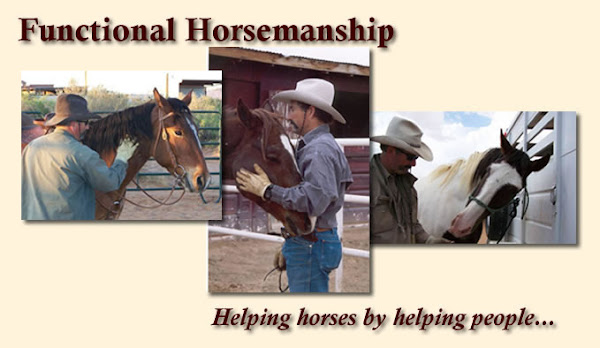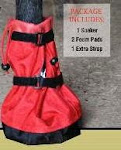In all my years I never owned a horse diagnosed with Navicular, until a few months ago. I have seen many horses that have foundered, and others with ring bone, side bone, and other connective tissue issues. Navicular is a general term for degenerative changes in the navicular bone in the horse's hoof, usually the front feet and usually bi-lateral - meaning both front feet.
At first you may notice an intermittent lameness, like I did on my horse Junior. Early on, you may not notice any lameness signs, such as head bobbing, when the horse is moving straight even at a trot because of the condition manifesting itself in both front feet. Although you may feel a slightly chopped or shortened gait. However, it will usually be telling when the horse moves laterally with a front foot.
My purpose in this article is not to take apart Navicular which again is a general term, whether it is called Navicular condition or Navicular disease. I'd like to focus on what I am doing with Junior now that his condition is chronic.
Junior is a now 21 year sorrel grade gelding who I bought when he was 4 years old and used him as my primary work horse when I was an Army Range Rider and Conservation Law Enforcement Officer working the desert highlands and four different mountain ranges. Long trailer hauls then long rides looking for trespass cattle and law breaking humans. Junior never let me down. I have rode him attending clinics, teaching my own clinics, day work on ranches and in horsemanship and ranch sorting competition. Junior is by far the fastest horse I ever rode. He has certainly earned every feeding and then some.
His feet were in bad shape when I bought him at a USDA Tick Rider auction. With thin hoof walls and the tell tale ridges coming out of the coronet band that foretold bad nutrition, and near collapsed heel bulbs on one back foot. I started him on Joint supplements (Joint pellets from SmartPak and Horseshoers Secret) as soon as I bought him. And my excellent horseshoer, Vince Vesely of Diamond Bar V horseshoeing, has been shoeing Junior for the past 17 years making him as good as he can be which was significant. Mental note - if you have a great shoer, treat him or her well.

He was a match racing horse in Mexico and much like the practice here in the United States, racing horses are started in training before they are fully grown and that training can be very hard on their feet and joints. That's why I am not a fan of Futurities in practically any equine discipline. Apologies to all the great horsemen and women who ride young horses, I know they are under pressure to create earnings quickly and they provide great care for their horses, but sometimes a heavy load of early training does a disservice to young horses in my opinion.
I first started to notice Junior's intermittent lameness in February 2020. Days off migrating to weeks off seemed to help him. When his condition became pretty chronic (early October 2020) I had my Veterinarian Dr. Amy Starr, DVM, do a work up including nerve blocks and take x-rays. She then worked with a equine radiologist and also a equine orthopedic surgeon (Dr. Jorge Ramos, DVM) to determine what the radiographs and her exam showed.
The diagnosis was that Junior had Bilateral navicular changes compatible with navicular disease of the left and right forelimbs; Chronic sesamoiditis of the medial sesamoid bone of the left fore fetlock; and, Mild side bone of the distal phalanges of both forefeet. These are things nobody wants to hear, as this is something you can't cure, only manage for pain. And managing the pain was my intent as Junior was now on his pension plan and planning on living out his days, as long or as short as they may be, as pain free as I make him.
Once I received the diagnosis, I immediately (mid October 2020) started him on Adequan injections and daily Equioxx tablets. In addition, I added a supplement to his existing joint and hoof supplements called Devils Claw Plus from Uclele.
Adequan is given through intramuscular injection and is recommended for the treatment of non-infectious degenerative and/or traumatic joint dysfunction and associated lameness of the carpal and hock joints in horses - according to the manufacturer. It is given again as an IM injection, every four (4) days for the first (7) seven injections, then every 30 days after that. Also according to the manufacturer, Adequan reduces the swelling and inflammation associated with joint disease to improve lameness; Restores synovial lubrication that facilitates movement and reduces local inflammation; Repair cartilage and rapidly aids in the production of new cartilage; and, Reverse the disease cycle that leads the loss of cartilage components by inhibiting harmful enzymes that attack cartilage and synovial fluid. For more information go here:
Adequan
Equioxx is a Non Steroidal Anti Inflammatory Drug (NSAID) for the control of pain and inflammation associated with osteoarthritis in horses. While it is available as an injection, or paste, I use the chewable tablet form and Junior has no problem eating in in a bucket of few crushed up horse cookies. It is given every 24 hours. And while it is intended for use up to 14 days, I am continually using with periodic blood tests to ascertain any renal issues.
For more information go here: Equioxx
In mid December 2020, after a conversation with Dr Ramos, I replaced Junior's feed supplements (senior joint pellets from SmartPak, Horseshoers Secret pellets and the Devils Claw) with Platinum Performance Complete Joint (CJ) supplement. In late January 2021, Junior looked comfortable, actually he was racing round his 25x45 foot pen, cutting and turning on a dime, bucking and all that nonsense, so I took him for a short ride maybe 10 minutes, then a few days later, a longer ride of 25 minutes including several stretches of trotting.
For more information go here: Platinum Performance CJ
Dr. Ramos, DVM consulted with me several other times as well on other treatment options such as Osphos injections which is a intramuscular bisphosphonate injection given with a 3 to 6 month re-dosing timeline. In layman's terms, Osphos is intended to reduce the degenerative changes, limiting the breakdown of the bone in the feet. Osphos really can't be used in conjunction with NSAIDS such as Equioxx.
For more information go here: Osphos by Dechra
And, Dr. Ramos also counseled me on the possibility of injections of corticosteroids in the coffin bone joint. This is not an easy thing to do as it requires a x-ray to correctly place the injection exactly where it is intended.
For more information on Corticosteroid injections in the Coffin Bone joint
The bottom line for Junior and me, is we'll stay currently with the daily Equioxx, monthly Adequan injection and daily use of Platinum Performance Complete Joint. Since the Platinum Performance CJ is a powder, I have to add an oil to Junior's pelleted feed so the Platinum Performance CJ powder binds to the pellets so he will eat it. I have been using an oil called CocoSoya from Uclele, which is a blend of coconut oil and unrefined, cold-pressed Soybean Oil. Junior who was unimpressed with powder mixed with his pelleted feed, rapidly eats the mix when I added CocoSoya oil, which is a natural anti-inflammatory as opposed to Corn Oil which is inflammatory.
For more information go here: CocoSoya
So after almost a year of being lame, Junior is now useable in mindful way. He has earned his retirement. No more cow work or long rides for him. But I'll use him for clinics and ride him when I can, if not just for his mental health. I hope this article is of some use to someone somewhere. I know some people are just loath to supplement their horses, but Platinum Performance is an amazing product. Also I can't emphasize enough that to bring your Vet into the equation. I'm fortunate to have a great Vet who reached out to specialists to get Junior where he is now. And I'm thankful for everyday this horse has been in my life and look forward to having him around, pain free or managed, for a long time to come.























